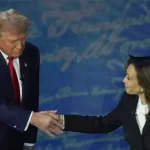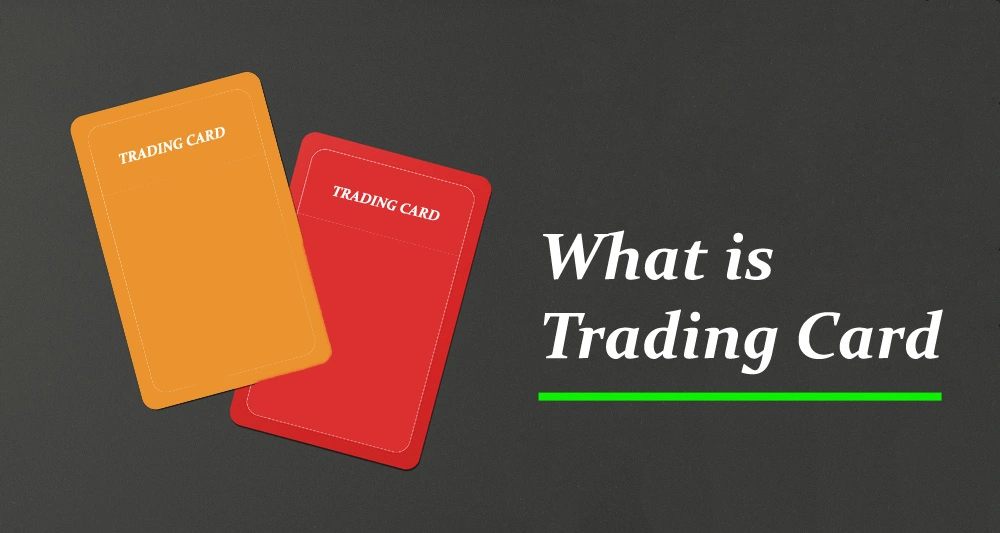What is Trading Card
Trading cards are small, collectible cards that feature images or information related to a particular theme or subject, such as sports, movies, or historical events. They typically measure around 2.5 by 3.5 inches and can be made from a variety of materials, including paper, cardboard, plastic, or metal.
Trading cards are usually sold in packs or boxes and often come with a set of rules for trading and collecting. Some cards may be more valuable than others, depending on their rarity or popularity, and collectors often trade or sell them for profit.
Trading cards have been around for over a century, with the first baseball cards dating back to the late 1800s. Today, trading cards are popular with collectors and enthusiasts of all ages, and there are many different types of cards available for a wide range of interests and hobbies.
What are Trading Cards Used for
They can be used for a variety of purposes, including:
- Collecting: Many people collect trading cards simply for the enjoyment of owning them. Collectors may focus on a particular type of card or theme, such as sports, movies, or historical events.
- Trading: Trading cards are often traded between collectors as a way of obtaining new cards or completing a collection. The value of a card can be determined by its rarity, age, condition, or popularity.
- Gaming: Some trading cards are designed for use in games, such as Magic: The Gathering or Pokemon. In these games, players use their cards to battle each other or complete tasks.
- Investment: Some people buy trading cards as an investment, hoping that their value will increase over time. This can be a risky strategy, as the value of a card can be influenced by many factors, including the popularity of the subject matter and the condition of the card.
Trading cards are used for a variety of purposes, but their primary appeal lies in their ability to provide entertainment, enjoyment, and a sense of nostalgia for collectors and fans.
Size of Trading Card
Trading cards come in various sizes depending on the type and purpose of the card. Here are some common trading card sizes:
- Standard Trading Card Size: 2.5 x 3.5 inches
- Mini Trading Card Size: 1.5 x 2.5 inches
- Jumbo Trading Card Size: 5 x 7 inches or larger
- Square Trading Card Size: 2.5 x 2.5 inches or 3 x 3 inches
The standard trading card size of 2.5 x 3.5 inches is the most commonly used size for sports and entertainment trading cards. However, some specialty cards, such as oversized or mini cards, are also popular among collectors.
Types of Trading Cards
There are several types of trading cards, including:
- Sports trading cards: These are the most popular type of trading cards and feature athletes from various sports such as baseball, football, basketball, hockey, soccer, and more.
- Non-sports trading cards: These are trading cards that feature characters from movies, TV shows, video games, and other pop culture icons. Examples include Star Wars, Pokémon, and Marvel Comics.
- Collectible card games (CCGs): These are trading cards that are designed to be played as a game. The most popular CCGs include Magic: The Gathering, Pokémon, and Yu-Gi-Oh!.
- Historical trading cards: These are trading cards that feature historical figures and events, such as famous battles or political leaders.
- Artist trading cards: These are small, hand-drawn or painted cards that are created by artists and traded among collectors.
- Promotional trading cards: These are trading cards that are used to promote a particular product, such as a movie or video game.
- Trading card sets: These are trading cards that are designed to be collected as a set, with each card featuring a different element of the same theme. Examples include sets featuring various breeds of dogs or historical aircraft.
- Autographed trading cards: These are trading cards that have been signed by the athlete or celebrity featured on the card, making them highly valuable to collectors.
What makes a Trading Card valuable
Several factors can make a trading card valuable, including:
- Rarity: The scarcer a card is, the more valuable it can be. The fewer copies of a card that were printed or released, the higher its value may be.
- Condition: The condition of a card is critical in determining its value. Cards in excellent condition, with minimal wear and tear, are worth more than those with damage, creases, or other defects.
- Authenticity: A card’s authenticity can also affect its value. Cards that are verified to be genuine and not counterfeit can command a higher price than cards of dubious origin.
- Age: Older cards can often be more valuable than newer ones, particularly if they are from a particularly popular or sought-after set or era.
- Player or Character Popularity: Cards featuring popular or iconic players or characters may be more valuable than those featuring less well-known individuals.
- Historical significance: Some cards may have historical significance, such as a player’s rookie card or a card that marks a significant event or milestone in the sport’s history. These can often be worth more than other cards.
- Limited Editions: Special edition cards or those released only in limited quantities can be particularly valuable to collectors.
Examples of Trading Card
Here are some examples of trading cards:
- Sports trading cards – These are the most common type of trading card and feature images of athletes from various sports such as baseball, basketball, football, hockey, and soccer.
- Pokemon trading cards – These are collectible cards that feature characters from the popular Pokemon franchise.
- Magic: The Gathering trading cards – These are collectible cards featuring characters and spells from the popular trading card game, Magic: The Gathering.
- Yu-Gi-Oh! trading cards – These are collectible cards featuring characters and monsters from the popular trading card game, Yu-Gi-Oh!.
- Marvel trading cards – These are collectible cards featuring characters from the Marvel Comics universe, including superheroes like Spider-Man, Iron Man, and Captain America.
- Star Wars trading cards – These are collectible cards featuring characters and scenes from the Star Wars franchise, including the original trilogy, prequel trilogy, and sequels.
- Garbage Pail Kids trading cards – These are collectible cards featuring humorous and often grotesque depictions of fictional characters.
- World of Warcraft trading cards – These are collectible cards featuring characters and items from the popular online role-playing game, World of Warcraft.
- Lord of the Rings trading cards – These are collectible cards featuring characters and scenes from J.R.R. Tolkien’s epic fantasy novel, The Lord of the Rings.
- DC Comics trading cards – These are collectible cards featuring characters from the DC Comics universe, including superheroes like Batman, Superman, and Wonder Woman.
How to play Trading Cards
Here are some general steps for playing trading card games:
- Choose a game: There are many trading card games available, such as Magic: The Gathering, Yu-Gi-Oh!, and Pokemon. Choose a game that interests you.
- Get a starter deck: Most trading card games have starter decks available for beginners. These decks usually come with all the cards you need to start playing.
- Learn the rules: Each game has its own set of rules. Read the rulebook that comes with your starter deck or find a tutorial online to learn how to play.
- Build your deck: Once you have a basic understanding of the rules, you can start building your own deck. Most trading card games have rules about how many cards you can have in your deck and what types of cards you can use.
- Find opponents: Trading card games are meant to be played with other people. You can find opponents at local game stores or online.
- Play the game: Once you have opponents, you can start playing the game. Follow the rules and try to outsmart your opponent by using your cards strategically.
- Practice and improve: The more you play, the better you will become. Practice often and try to learn from your mistakes to improve your skills.
Are Trading Cards good investment
Historically, certain trading cards have appreciated in value over time, particularly those associated with popular sports and entertainment franchises. However, there are no guarantees that any particular card will increase in value, and there is always a risk of the market changing or declining.
Additionally, investing in trading cards can require significant upfront costs, particularly for rare or highly sought-after cards, and there may be ongoing expenses associated with maintaining the condition of the cards.
Overall, if you have a passion for collecting and a willingness to do your research and take calculated risks, trading cards can be a potentially profitable investment. However, as with any investment, it’s important to approach it with caution and to diversify your portfolio to minimize risk.

























Hello there, just became aware of your blog through Google, and found that it’s really informative. I am gonna watch out for brussels. I’ll appreciate if you continue this in future. Many people will be benefited from your writing. Cheers!|